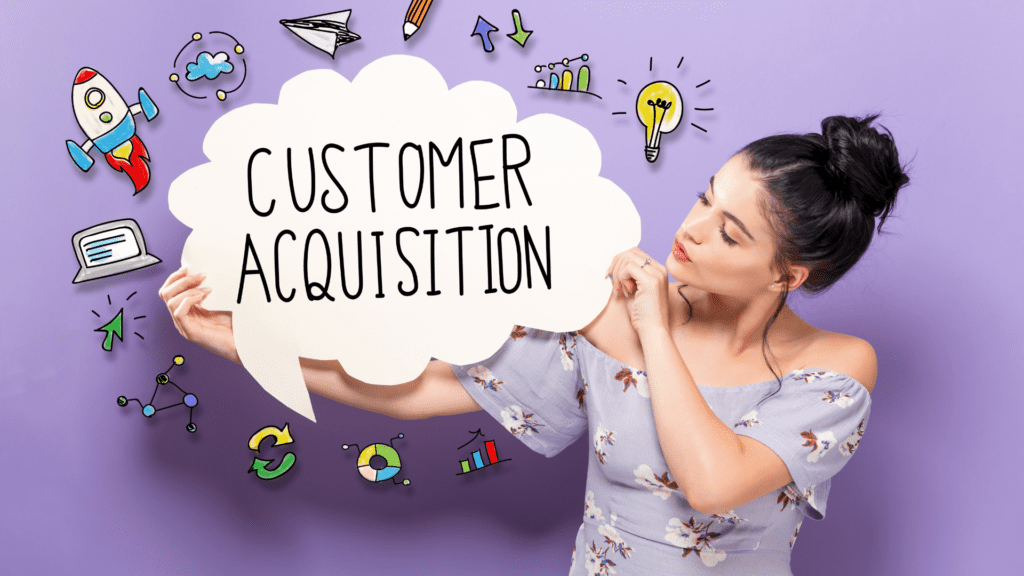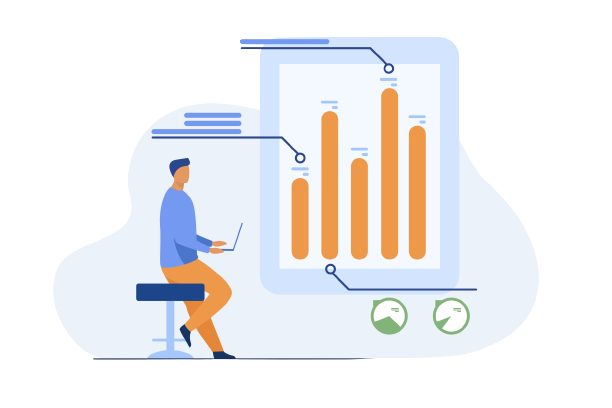

This comprehensive guide will walk you through the strategies, tactics, and best practices for effective customer acquisition


Struggling to bring in new customers? Feeling like you’re shouting into the void? We’ve all been there. You invest in marketing, yet your customer base remains stagnant, leading to frustration and wasted resources. Missed opportunities and stagnant growth create doubt and fear of falling behind competitors. But there’s a solution: a strategic approach to customer acquisition. This guide offers proven, actionable strategies to attract, retain, and convert prospects into loyal customers, turning your acquisition challenges into opportunities for sustainable growth.
Customer acquisition refers to the process of attracting and converting prospects into paying customers. It’s a critical component of your business strategy, encompassing all the activities and efforts aimed at growing your customer base. Effective customer acquisition involves understanding your market, identifying your ideal customers, and implementing strategies that resonate with them. By mastering these strategies, you set the foundation for sustainable business growth.
Customer Acquisition Cost (CAC) formula calculates the average cost you incur to acquire a single new customer. It’s a crucial metric for understanding the effectiveness of your customer acquisition efforts.
Here’s a breakdown of the formula:
Total Cost of Sales & Marketing: This includes all expenses directly tied to acquiring new customers. Examples include:
Number of New Customers Acquired: This is the total number of new paying customers you acquire within a specific timeframe (e.g., month, quarter, year).
By calculating your Customer Acquisition Cost, you can:
Here are some additional tips for using the Customer Acquisition Cost formula:
Effective acquisition involves understanding your market, identifying your ideal customers, and crafting targeted strategies that resonate with them.
Before diving into customer acquisition strategies, it’s essential to set clear goals and objectives. These should align with your overall business goals and be specific, measurable, attainable, relevant, and time-bound (SMART). Examples of customer acquisition goals include:
By setting these goals, you provide a clear direction for your acquisition efforts, making it easier to track progress and adjust strategies as needed. Picture it like setting up a road trip: you wouldn’t start driving without knowing your destination and the best route to get there!
To acquire customers effectively, you need to know who they are. Identifying your target audience involves researching and understanding the demographics, psychographics, and behaviors of your ideal customers. Key steps include:
Your value proposition is a statement that clearly communicates the benefits your product or service offers to customers. It’s a critical element in attracting and converting prospects. 83% of customers are willing to pay more for a superior customer experience.
To craft a compelling value proposition:
A strong value proposition not only attracts attention but also encourages prospects to take action, setting the stage for successful customer acquisition. Imagine you’re at a party, and someone asks you what you do. Your value proposition is your perfect one-liner that makes them go, “Wow, I need that!”
Digital marketing channels are essential for reaching a broad audience and driving customer acquisition. Key channels include:
By effectively utilizing these channels, you can reach a larger audience and guide them through your sales funnel, ultimately converting them into loyal customers. It’s like casting a wide net when fishing, ensuring you catch the best fish.
Your website is often the first point of contact with potential customers, so it’s crucial to optimize it for conversions. Key tactics include:
By focusing on conversion optimization, you can turn more visitors into customers, driving growth and increasing your bottom line. Think of your website as a storefront: you want it to be inviting, easy to navigate, and stocked with everything your customers need.
Content marketing involves creating and sharing valuable content to attract and retain customers. Effective content marketing can establish your authority, build trust, and drive customer acquisition. Key tactics include:
By providing educational and informative content, you position yourself as an authority in your industry, encouraging prospects to trust and engage with your brand. Think of it as giving a helpful handout at a seminar; it’s both informative and builds your credibility.
SEO is the practice of optimizing your website to rank higher in search engine results. Higher rankings can lead to increased organic traffic and more customer acquisition opportunities. Key SEO strategies include:
Investing in SEO can significantly increase your visibility and attract more qualified leads, driving long-term growth for your business. Think of it as setting up a signpost on a busy road, directing people straight to your door.
Paid advertising can quickly drive traffic and generate leads. It involves paying for ads on platforms like Google, Facebook, and LinkedIn. Key paid advertising strategies include:
Paid advertising allows you to reach a wider audience quickly and effectively, providing an immediate boost to your customer acquisition efforts. Imagine it as paying for a prime billboard spot; you’re right where everyone can see you.
Email marketing is a powerful tool for nurturing leads and driving customer acquisition. It allows you to communicate directly with potential customers and build relationships over time. Key email marketing strategies include:
Effective email marketing can significantly improve your conversion rates, turning prospects into loyal customers. Think of it as sending a friendly reminder to someone about an upcoming event they’re interested in.
Email marketing boasts an average ROI of 4200%, making it a highly cost-effective tool for lead nurturing and conversion optimization
Referral and loyalty programs leverage your existing customer base to acquire new customers. Satisfied customers can become your best advocates, helping you reach new prospects through word-of-mouth. Key strategies include:
By implementing referral and loyalty programs, you can harness the power of word-of-mouth marketing to expand your customer base organically. Think of it as having your customers do your marketing for you because they love your service so much.
Continuous analysis and improvement are crucial for successful customer acquisition. By regularly reviewing your efforts and making data-driven adjustments, you can optimize your strategies for better results. Key steps include:
By adopting a data-driven approach, you can make informed decisions that enhance your customer acquisition efforts, driving sustainable growth for your business. It’s like having a GPS for your marketing journey, ensuring you’re always on the best path.
Customer acquisition is a multifaceted process that requires a strategic approach, ongoing effort, and continuous optimization. By understanding your target audience, leveraging various marketing channels, and continuously analyzing your efforts, you can build a robust customer acquisition strategy that drives sustainable growth for your business. Remember, the key to successful customer acquisition lies in delivering value, building trust, and creating meaningful connections with your potential customers. Start implementing these strategies today and watch your customer base grow.
By focusing on providing valuable knowledge and actionable steps, backed by data and statistics, you establish your authority and credibility in the industry. Show genuine excitement and optimism about the potential for growth and success, encouraging readers to take action and improve their customer acquisition efforts. This comprehensive guide is designed to equip you with the tools and strategies needed to thrive in today’s competitive business landscape. So, what are you waiting for? Dive in and start acquiring those customers!
Don’t forget to share this post






Don’t Let Your Competitors Understand Your Customers Better Than You
Don’t miss out. Try our 30-day Free Professional Trial.

